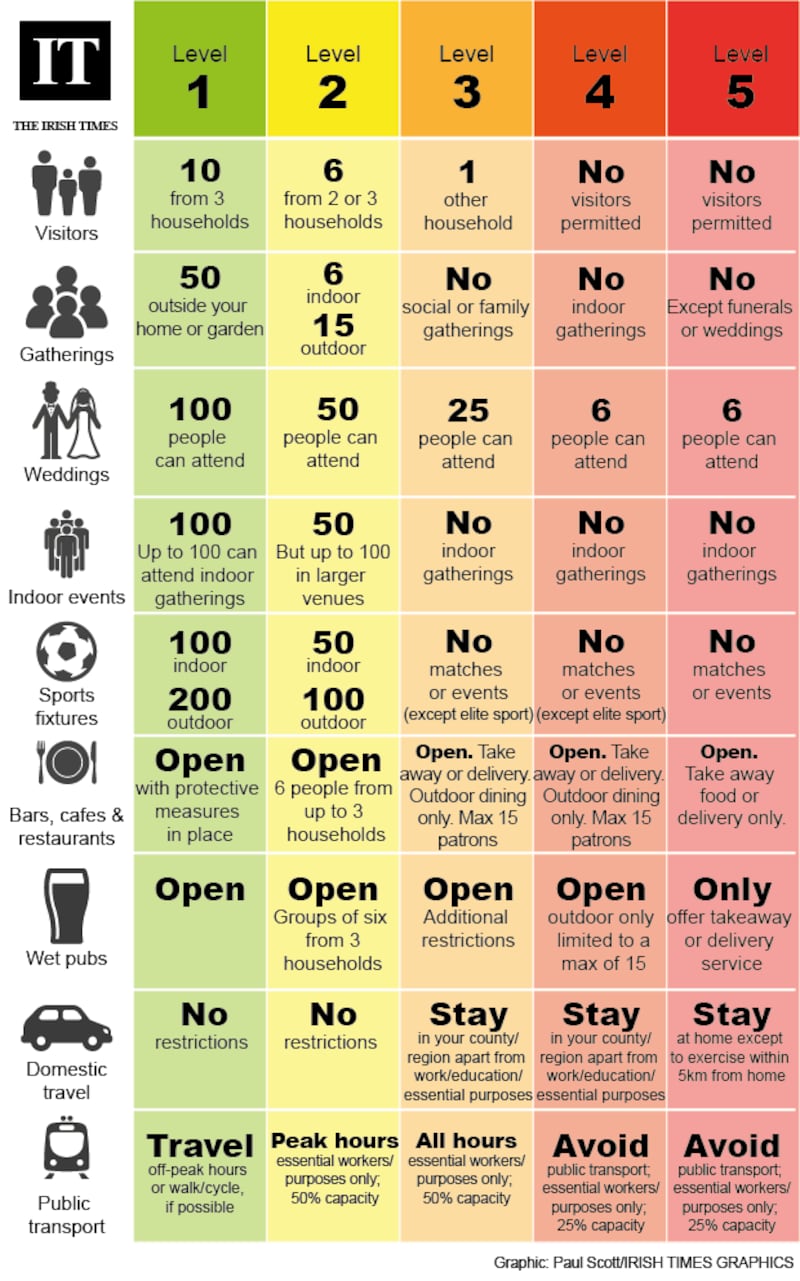Timing is everything, especially so with pandemics. It is unfortunate for the Government, therefore, that the pressing task of reining in a surge of Covid-19 cases in Dublin got in the way of its publication of its longer-term vision for dealing with the virus.
The plan is a long overdue and much-needed response to the realities of Covid-19, seven months into this crisis. Its 60 pages describe a reasonably comprehensive framework for living with the virus, given what we have learned since then.
Even in Level 5 of the plan, the closest to what happened in the spring, schools would stay open and small weddings and funerals would be allowed. It is clear there will no going back to the full lockdown of last March, as the Government attempts to balance public health and economic priorities.
Hospital Report

Level 1 is the promised land, where society would open up to relative normality, but the real action in the plan – and the greatest amount of fudging – is in the intermediate zone of Levels 2, 3 and 4. We’re all said to be in Level 2 at the moment – all of us from Sligo, with a 14-day incidence of 3.1, to Dublin, where the incidence is 30 times higher.
This is a nonsense, of course, and the situation may change after the National Public Health Emergency Team (NPHET) runs its rule over the latest figures when it meets on Thursday. Having recommended a postponement of the reopening of wet pubs in the capital, along with some minor changes to the rules around household visits last week, NPHET may have to suggest unpopular restrictions, possibly a ban on moving outside the county, later this week. And the Government, despite its evident reluctance, may have to adopt them.
We have known for a long time that this virus will come in waves; the challenge today is to ensure these waves are dampened, so each successive one is smaller than the last, until eventually the virus ebbs away.
Neither is it surprising that Dublin is the hot spot for the virus. Right through the pandemic, it has accounted for about half of all cases. Across the globe, Covid-19 is mostly a disease of large, crowded cities and, increasingly, of poor and marginalised groups.
The question now is whether we follow the trajectory seen in New York, which has effectively squashed its initial surge, or Madrid, whose U-shaped curve shows the virus is back with a vengeance. New York’s success is being attributed to effective testing, tracing and follow-up of those in quarantine; Madrid’s problems are being laid at the door of poor testing and socialising in indoor settings.
Adequate testing
Ireland’s testing system is operating at full pelt, and seems to be functioning well within its limitations. Our positivity rate, ranging from 2 per cent up to 3.5 per cent in Dublin, compares well with other countries, so it seems the volume of testing is adequate.
The problem with the mixed messaging around Dublin is that it further corrodes public trust in the Government’s intentions. Residents of Laois and Offaly may well ask why the capital is being spared the travel restrictions imposed last month on midland counties, despite similar levels of the virus.
Trust matters because, ultimately, the way out of this pandemic is the same as it always was; in addition to testing, social distancing, hand hygiene, mask-wearing and reducing social contacts are the key weapons available to us to control the virus, and each of these are determined by individuals taking action, rather than the State.











